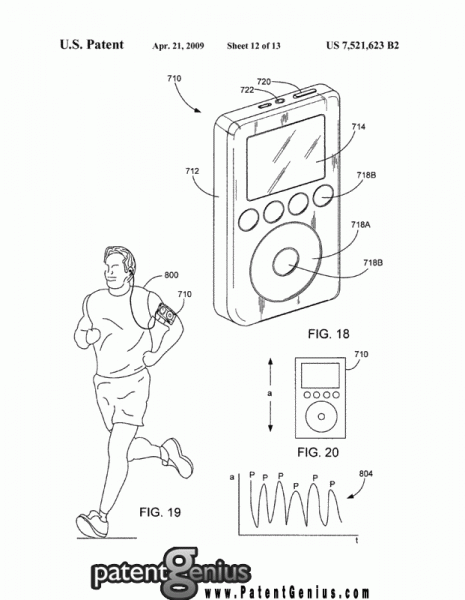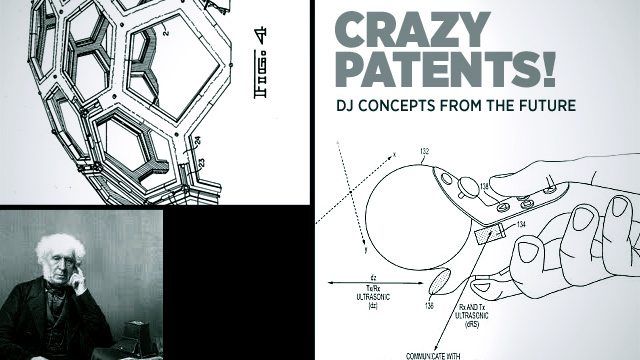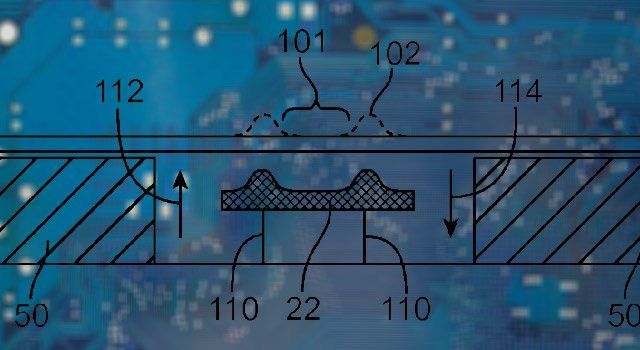In this series I go trolling through the patent databases to pull up next level concepts that may be years from hitting the market place. Today, we un-earthed a patent covering the use of peoples movements to drive the tempo of an automatic mixing system. The logical use is in runners and workouts but a possible extension also covered is on the dance floor. One obvious problem though, is that people dance to the music – and not the other way around. Any ideas how this technology could be used to track the energy of dancers in an effective way?
One general problem with patents is that they are so broadly phrased, bizarrely written and generally nuts that its possible to get most patents to cover almost anything- with the right lawyer and enough cash. That, however, is a discussion for another article. For now, onto the patent in question.
Patent #7,599,685 – October 2009

Highlighted section of the detail
In accordance with one embodiment, the media player is configured to control the tempo of the music being outputted from the media player based on the signal from the sensor. In the case of a body metric such as body motion or heartbeat, the sensor measures a body metric and converts the body metric into a signal indicative of the body metric. The signal is sent to the processor that analyzes the signal and extracts tempo information from the body metric signal. The processor then refers to a set of rules that tell the processor how to affect the music being outputted based on the tempo information. The rules may for example be stored in the memory block. After consulting the rules, the processor may select a particular song for outputting based on the tempo information. (i.e., select a song that has a tempo that matches the tempo information, select a song that has a tempo greater than the tempo information, select a song that has a tempo that is lower than the tempo information). Additionally or alternatively, the processor may modify the song itself based on the tempo information (i.e., increase or decrease the tempo of the song in accordance with the tempo of the body metric).
In one embodiment, the rules are embodied in a tempo control program for controlling the tempo of the music to be outputted. The tempo program may be accessed by a user through a tempo control menu, which may be viewed on the display device 170 as part of a GUI interface. The tempo control menu may include various options. In fact, the tempo control menu may serve as a control panel for reviewing and/or customizing the tempo control settings, i.e., the user may quickly and conveniently review the tempo control settings and make changes thereto. Once changed, the modified tempo control settings will be automatically saved and thereby employed to handle future tempo processing.
The tempo control program may include a beat synch module that is configured to modify the outgoing audio. For example, it is capable of adjusting the tempo of the music being outputted from the music player system. Once a song has been selected, the audio associated with the song is played so that a user can listen to the song. If the beat synch module is activated, it will adjust the tempo of the playing audio based on the tempo obtained from the sensor. The adjustment may be made using an algorithm capable of adjusting the tempo in a non-trivial manner. The algorithm may for example be associated with phase vocoding or SFFT processing. Phase vocoding is a complex signal processing technique that includes elements of LPC (linear predictive coding). It uses continuous and overlapping Fourier transforms of a sound for several related objectives ranging from resynthesis, and timbral interpolation from one sound to another, to time stretching (altering the tempo without affecting the pitch) and pitch shifting (transposition of a sound without altering the tempo). Traktor DJ studio manufactured by Native Instruments of Germany is one example of a program that uses phase vocoding.
Now if you are really bored or have a un-natural love of excessively wordy documents – check out the full patent here.







